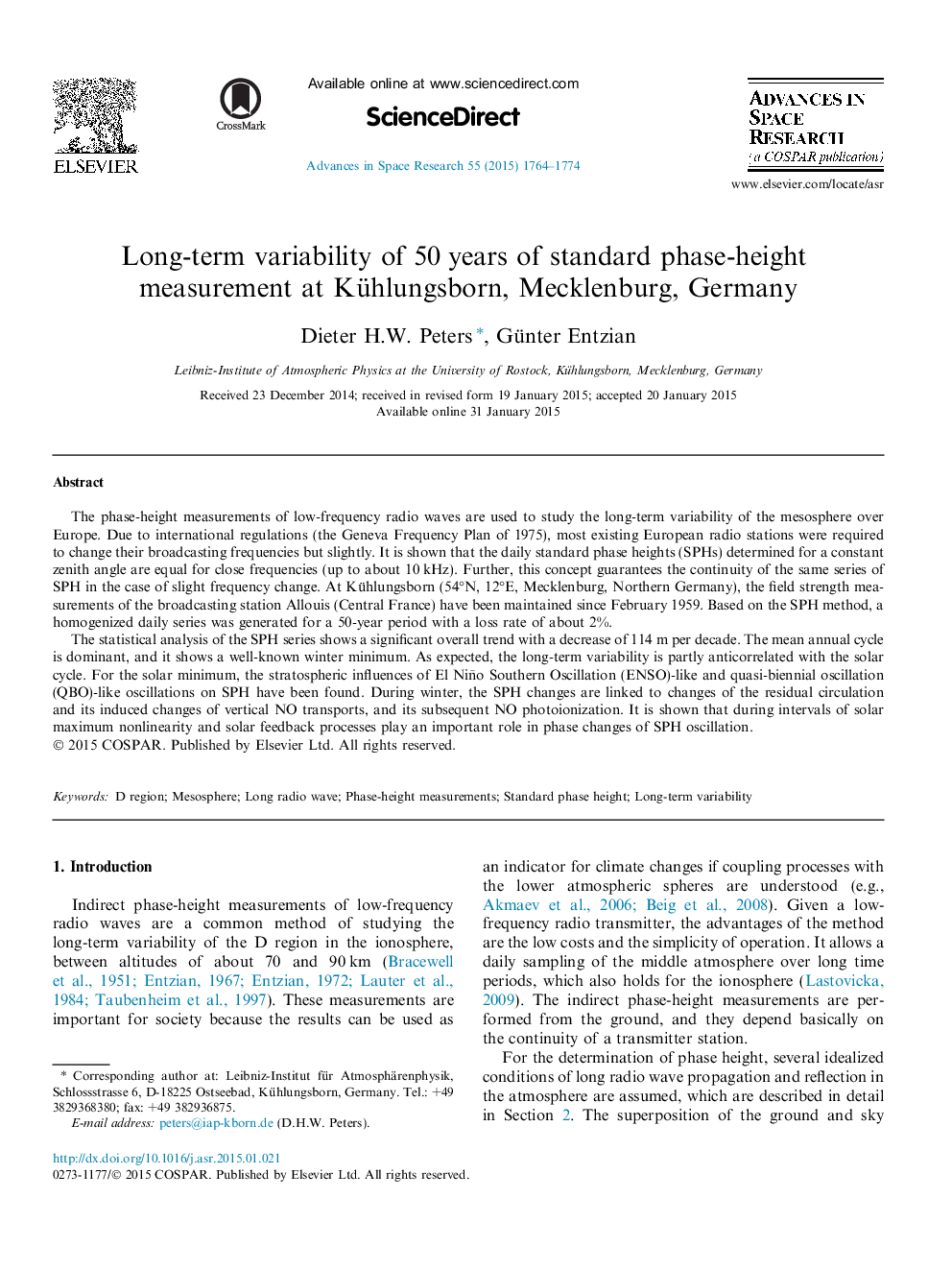| Article ID | Journal | Published Year | Pages | File Type |
|---|---|---|---|---|
| 10694386 | Advances in Space Research | 2015 | 11 Pages |
Abstract
The statistical analysis of the SPH series shows a significant overall trend with a decrease of 114Â m per decade. The mean annual cycle is dominant, and it shows a well-known winter minimum. As expected, the long-term variability is partly anticorrelated with the solar cycle. For the solar minimum, the stratospheric influences of El Niño Southern Oscillation (ENSO)-like and quasi-biennial oscillation (QBO)-like oscillations on SPH have been found. During winter, the SPH changes are linked to changes of the residual circulation and its induced changes of vertical NO transports, and its subsequent NO photoionization. It is shown that during intervals of solar maximum nonlinearity and solar feedback processes play an important role in phase changes of SPH oscillation.
Related Topics
Physical Sciences and Engineering
Earth and Planetary Sciences
Space and Planetary Science
Authors
Dieter H.W. Peters, Günter Entzian,
